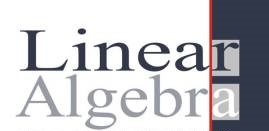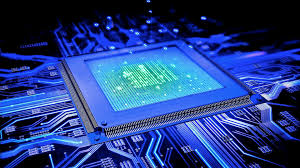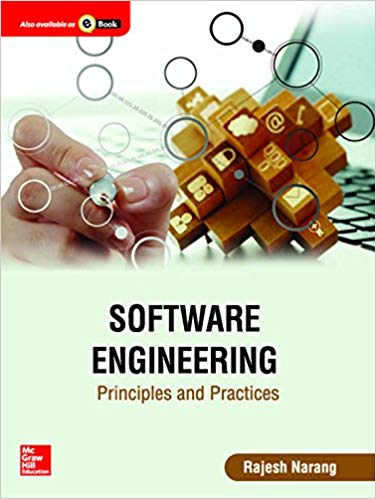Course Description:
Using appropriate analytical frameworks, this course
reviews major trends in economic indicators and policy debates in India in the
post-Independence period, with particular emphasis on paradigm shifts and
turning points. Given the rapid changes taking place in India, the reading list
will have to be updated annually.
|
Course objectives: |
|||
|
CO1 |
To get an overview of Indian Economy. |
||
|
CO2 |
To make the students acquainted with the latest developments in the Economy. |
||
|
CO3 |
Students will come across with the problems and success of LPG Policy |
||
|
CO4 |
Know the positive and negative impacts of LPG. |
||
|
CO5 |
Students will know and understand nations problems |
||
|
CO6 |
Learn the measures to solve the problems of the nation. |
||
Course Outcomes:
After completion of this unit, students will be able to:
Understand and explain an overview of Indian economy. Understand and explain the latest developments take place in our economy.
After completion of this unit, students will be able to:
Understand and explain the concepts of LPG with examples. Understand and Explain tie problems and measures of Poverty and Unemployment.

- Teacher: VINOD PATTATHIL
Course Objective
1. Understand vector spaces and subspaces and apply their properties.
2. Construct a mathematical expression that involving characteristics of matrices, such as its four fundamental subspaces, rank, determinant, eigenvalues and eigenvectors, diagonalization.
Course Outcomes
CO1. Demonstrate understanding of the concepts of vector space and subspace.
CO2. Demonstrate understanding of linear independence, span, and basis.
CO3. Determine rank by reducing the matrix to Echelon and Normal forms.
CO4. Determine eigenvalues and eigenvectors and solve eigenvalue problems.
CO5. Determine a modal matrix, and reducing a matrix to diagonal form.
CO6. Compute inner products on a real vector space and orthogonality in inner product spaces.

- Teacher: NAGENDRA KUMAR GOLLAPUDI
Course Objective:
Students learn to describe some of the surfaces by using analytical geometry
Course Outcomes:
CO1: Equation, centre and radius of Sphere
CO2: Understand the concept of Sphere and circle
CO3: Find family of spheres Passing through a circle , tangent planes and normal lines to a sphere
CO4: Understand the concept of Radical plane
CO5: Representing a cone , cone and a plane
CO6: Concept of the Right Circular Cone, the Cylinder, the Right Circular Cylinder
CO7: The General Equation of a conicoid, Intersection of Line with a Conicoid
CO8: Concepts of Plane of contact, Enveloping Cone and Cylinder

- Teacher: DAYANANDA BABU V
COURSE OBJECTIVES:
|
OBJECTIVES |
||
|
1.To become familiar with the architecture and Instruction set of Intel 8085 microprocessor. 2.To provide practical hands on experience with Assembly Language Programming. 3.To familiarize the students with interfacing of various peripheral devices with 8085 microprocessor. 4.To understand techniques for faster execution of instructions and improve speed of operation and performance of microprocessors. COURSE OUTCOMES:
|

- Teacher: SANDHYA -
| Course Objectives | |
| 1 | Apply their foundations in software engineering to adapt to readily changing environments using the appropriate theory, principles, and processes |
| 2 | Demonstrate the ability to work effectively as a team member and/or leader in an ever-changing professional environment |
| 3 | Be able to elicit, analyze and specify software requirements through a productive working relationship with various stakeholders of a software development project; |
| 4 | Be able to function effectively as a team member |
| 5 | Understanding professional, ethical and social responsibility of a software engineer |
| 6 | Be able to use Unified Modeling Language in software specification documents |
| Course Outcomes | |
| CO1 | the ability to analyze, design, verify, validate, implement, apply, and maintain software systems. |
| CO2 | an ability to use the techniques, skills, and modern engineering tools necessary for engineering practice. |
| CO3 | How to apply the software engineering lifecycle by demonstrating competence in communication, planning, analysis, design, construction, and deployment |
| CO4 | An ability to work in one or more significant application domains |
| CO5 | Work as an individual and as part of a multidisciplinary team to develop and deliver quality software |
| CO6 | Demonstrate an understanding of and apply current theories, models, and techniques that provide a basis for the software lifecycle |
| CO7 | Demonstrate an ability to use the techniques and tools necessary for engineering practice |

- Teacher: VIDYA SAGAR JODU
- Teacher: NOOR UNISA
- Teacher: APARNA VIJAYAN
This course provides an introduction to object oriented programming (OOP) using the Java programming language,.
The objective is to teach the basic concepts and techniques which form the object oriented programming paradigm
- Teacher: SOWJANYA D
- Teacher: ANU VICTOR
COURSE OBJECTIVES:
|
UNIT |
OBJECTIVES |
|
I |
§ Recognize different types of number systems as they relate to computers. § Convert values from decimal, binary, octal, hexadecimal, and binary-coded decimal number systems to each other and back to the other systems. § Add and subtract in binary, octal, and hexadecimal number systems. § Identify NOT, OR, AND, NOR, NAND, and XOR logic functions and their symbols. § Evaluate simple Boolean functions. § Identify common combinational building blocks. § Identify common sequential building blocks. § Application of logic to design and creation, using gates, to solutions to a problem. |
|
II |
§ Understand Boolean algebra and basic properties of Boolean algebra; § Able to simplify simple Boolean functions by using the basic Boolean properties. § Able to design simple combinational logics using basic gates. § Able to optimize simple logic using Karnaugh maps, understand "don't care". § Use DeMorgan’s Theorem to simplify a negated expression. § Formulate and employ a Karnaugh Map to reduce Boolean expressions and logic circuits to their simplest forms. § Create circuits to solve problems using gates to replicate all logic functions. |
|
III |
§ Define sequential logic circuit § Differentiate between combinational logic circuit and sequential logic circuit § Describe flip flop § Understand types of flip flops , truth tables , symbols , timing diagram and its application in logic circuits § Construct types of flip flops using types of logic gates by drawing symbols and truth tables and timing diagram § Build SR,JK,T,D flip flops using logic gates |
|
IV |
§ Understanding the operation and characteristics of asynchronous and synchronous counters § Analyze counter circuits and counter timing diagrams § Determine the sequence of a counter § Determine the modulus of a counter § Analyze various types of counters § Design 4-bit up and down counters based on D-type flip-flops § Design 4-bit modulo-n counters and binary coded decimal (BCD) counters. § Construct of up/down synchronous counters § Design of sequential systems § Design of sequential counters with specified sequences § To acquire knowledge about different types of semiconductor memories § To study about architecture and operations of different semiconductor memories. |
COURSE OUTCOMES:
|
OUTCOMES |
|
CO1: The students will be able to Distinguish different number systems and explains conversion of one number system to another. CO2: The students will be able to explain the concept of Boolean algebra, logical operators and logic gates and implements basic logic gates using universal gates CO3: The students will be able to design circuits for simple Boolean expressions and Identify applications for combinational logic circuits and Develop truth tables for different combinational logic circuits
CO4: The students will be able to Draw a Karnaugh Map for a 2-, 3-, 4-, or 5-variable logic function and Use a K-map to minimize and express it in either minimal SoP or PoS form 2-10. CO5: The students will be able to Draw a circuit for a set-reset (“S-R”) latch and analyze its behavior and compare the response of a latch and a flip-flop to the same set of stimuli.
CO6: The students will be able to analysis the different RAM and ROM architecture and interconnects and analysis about design and characterization technique. |

- Teacher: SOWJANYA D
- Teacher: NAGENDRA KUMAR GOLLAPUDI